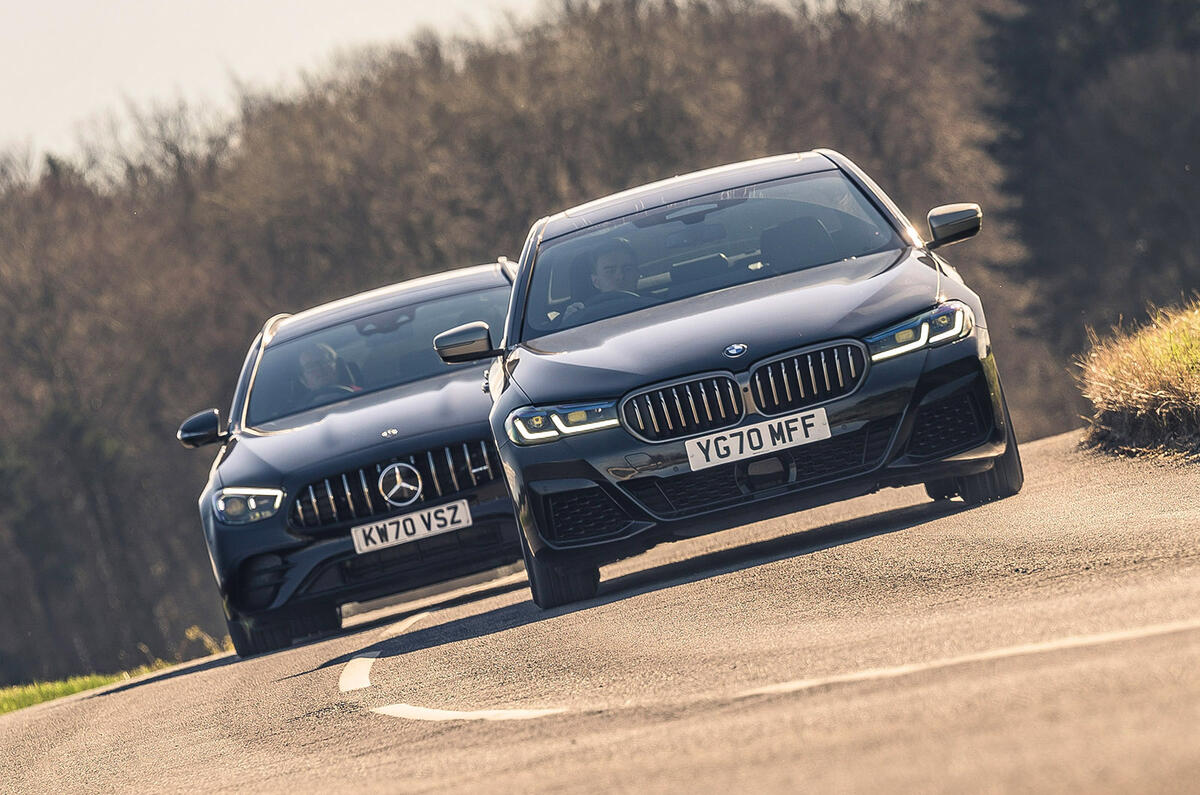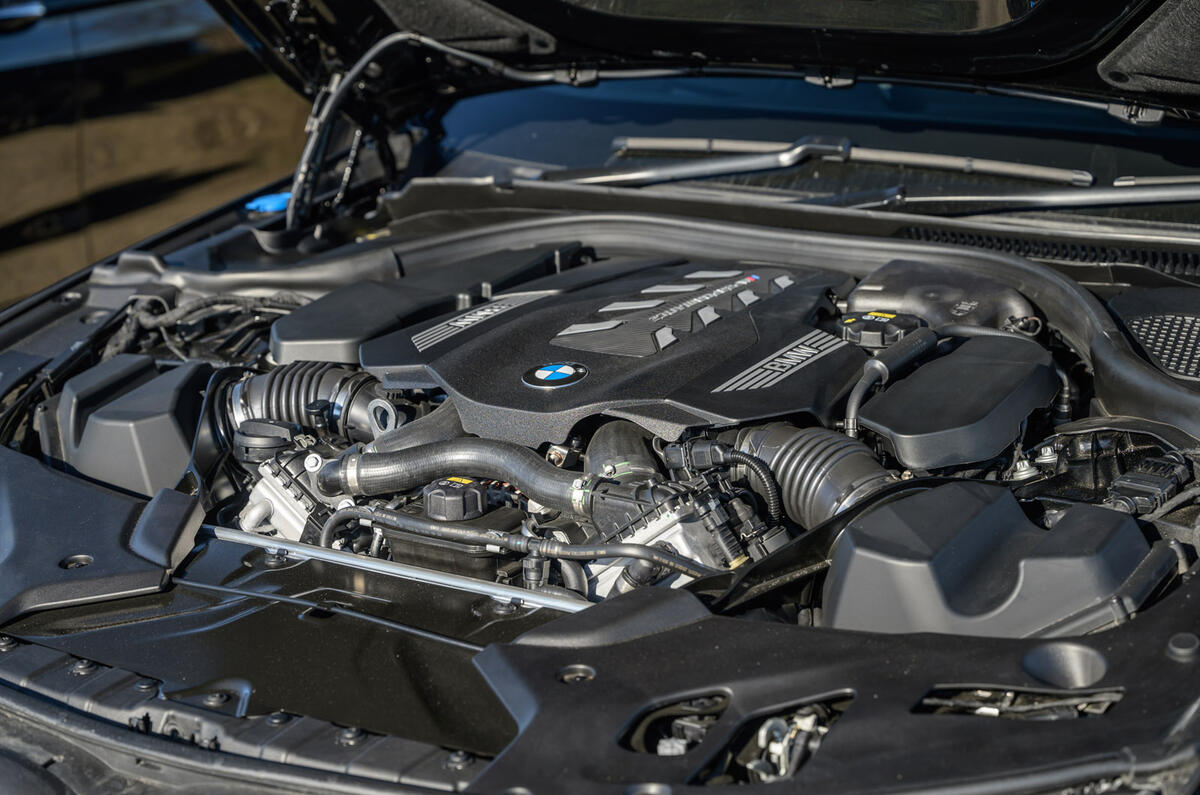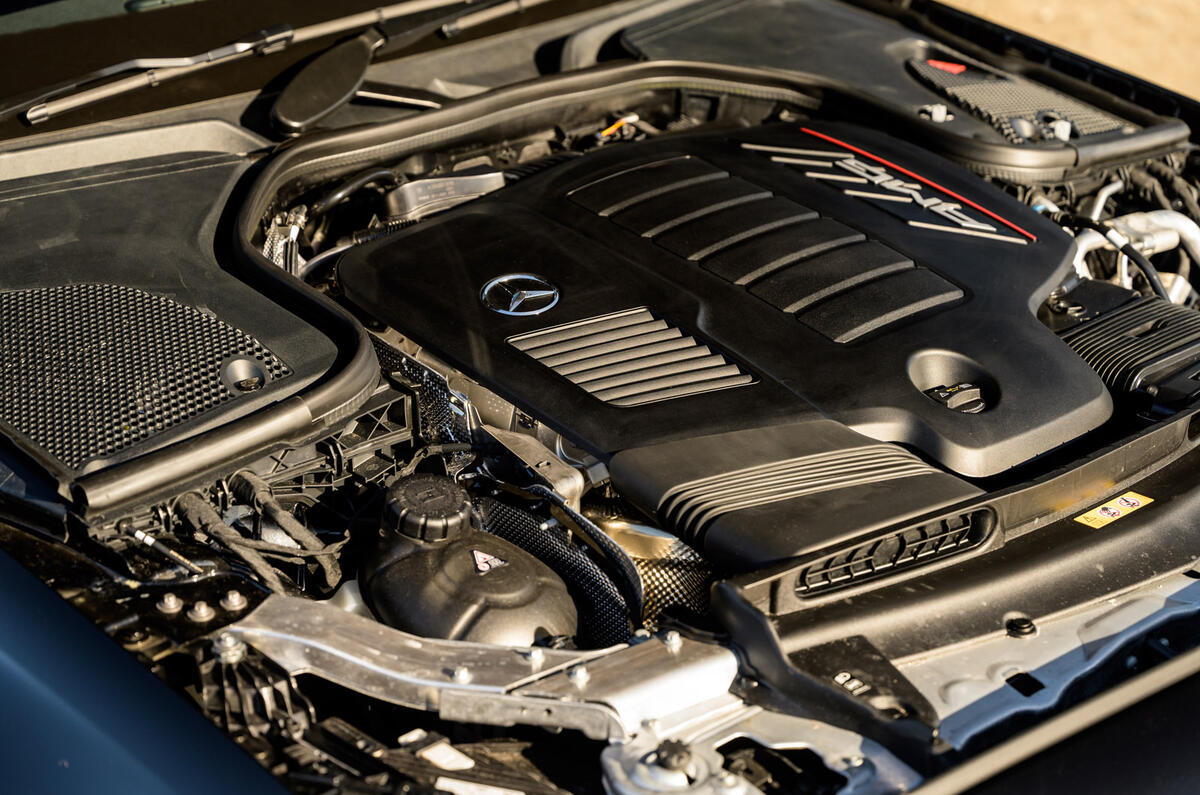First-order performance saloons have become seriously expensive, haven’t they? Even the ‘junior’ ones. If the near-£75k price of the new M3 Competition has given you pause for thought in that respect, here’s some more: you can have an eight-cylinder performance version of the bigger 5-Series – one with a little more power, a lot more torque, four-wheel drive, and faster 0-62mph claim than the M3 – for nearly £4000 less than the full-fat M Division model. Meet the excellent M550i xDrive.
And that isn’t the only option for big-budget saloon buyers willing to think just a shade more modestly, and to take one step down the performance hierarchy model ladder, in search of a more usable, real-world-prepared performance option. Mercedes-AMG has, for several years now, been offering a six-cylinder version of its hot E-Class, the E53 4Matic+, which dangles the prospect of the gratifyingly respectable fuel economy of a petrol-electric hybrid to make things even more interesting. Unlike the BMW, it can be had in extra-practical estate form, too.
So which interests you more: a second-order, four-wheel drive Mercedes-AMG performance estate car, or a stealthy, slightly understated BMW M550i saloon? These are the sorts of cars that those ‘badge delete’ order-form boxes were made for. There’d be more badges to remove from the E-Class than the 5-Series though and, thanks to the AMG’s sportier styling features, possibly less reason to bother doing so in the first place. The irony? That the slightly more discreet exhaust pipes that the BMW shows to the world are its own; of the more ostentatious set that that AMG touts, it cannot say the same.
The difference between two is clear enough on paper, albeit less so on list price (just £350 separates these test cars). It’s the saloon-level dynamic pedigree of BMW against the rich luxury appeal and added versatility of a big, modern Mercedes-AMG wagon. The velvety wallop of the BMW’s uncompromising turbocharged V8 (worth more than 550lb ft of torque) against the more subtle (and slightly less profligate- and antediluvian-sounding) petrol-electric straight-six hybrid power on offer in the Mercedes. The standing-start potential for 0-62mph in less than 4.0sec from the 5-Series; or not far off that, plus the cruising economy potential of up to 36.2mpg (‘WLTP high’ economy cycle), for the E-Class. And of spec-sheet surprises? That, in spite of the hybrid gubbins, it’s the E53 that’s the lighter of the two cars, and that it’s also more than 50mm narrower across the mirrors than the BMW (although it’s less than 20mm narrower to the body).

















































Join the debate
Add your comment
These tend not to be 'company cars' meaning the individual is putting their own money into the purchase whether that be cash, finance or some sort of lease arrangement. I suspect that accounts for most Autocar readers? As one of those Autocar readers, my biggest considerations are; depreciation and running costs versus the alternatives at similar price points? Am I alone in this thinking and why is this not addressed in the articles? Autocar journalists drive the cars for a day or two and comment on which is 'best', ignoring the real world costs of owning them. How does that help one decide? Agree 100% that both offer the same real world road performance as their more powerful brethren and that both make more sense from a practicality perspective.
71k is still a lot of cash... how about 10k and 100bhp less, 0-60 in 5 point something with V8 noise would still be an event.
Unless you know of some sensor embedded inside of a tire, you should be able to put whatever tire you want on the car. Just be mindful if you have a flat there's not going to be a spare unless you can specially order either an inflatable/"space saver" spare. I don't even know if that's optional on the 5-series and afaik it's not on the E-Class. Our S213 E400 came with run flats and with the rear facing third row I don't even know where a spare would fit.